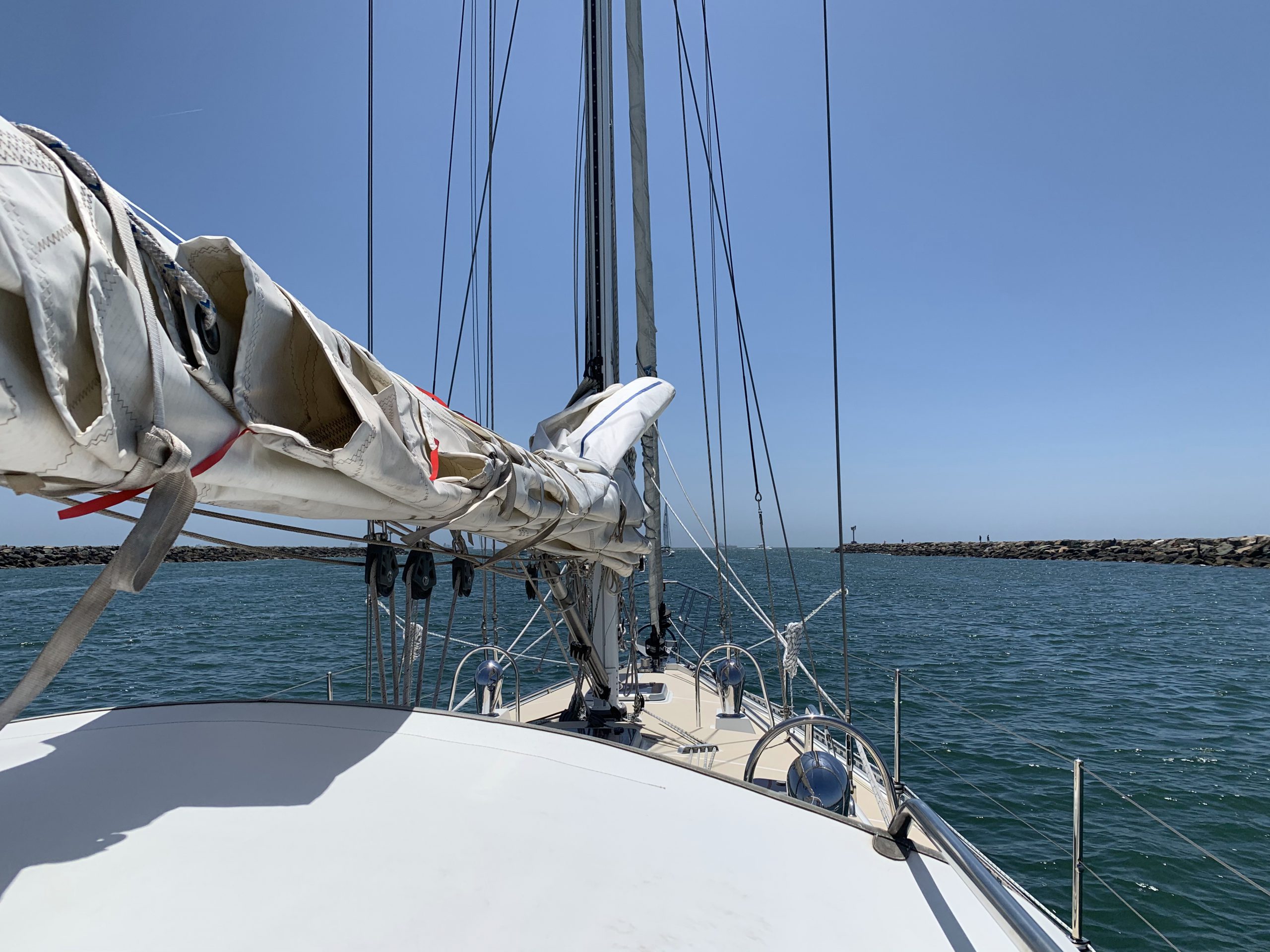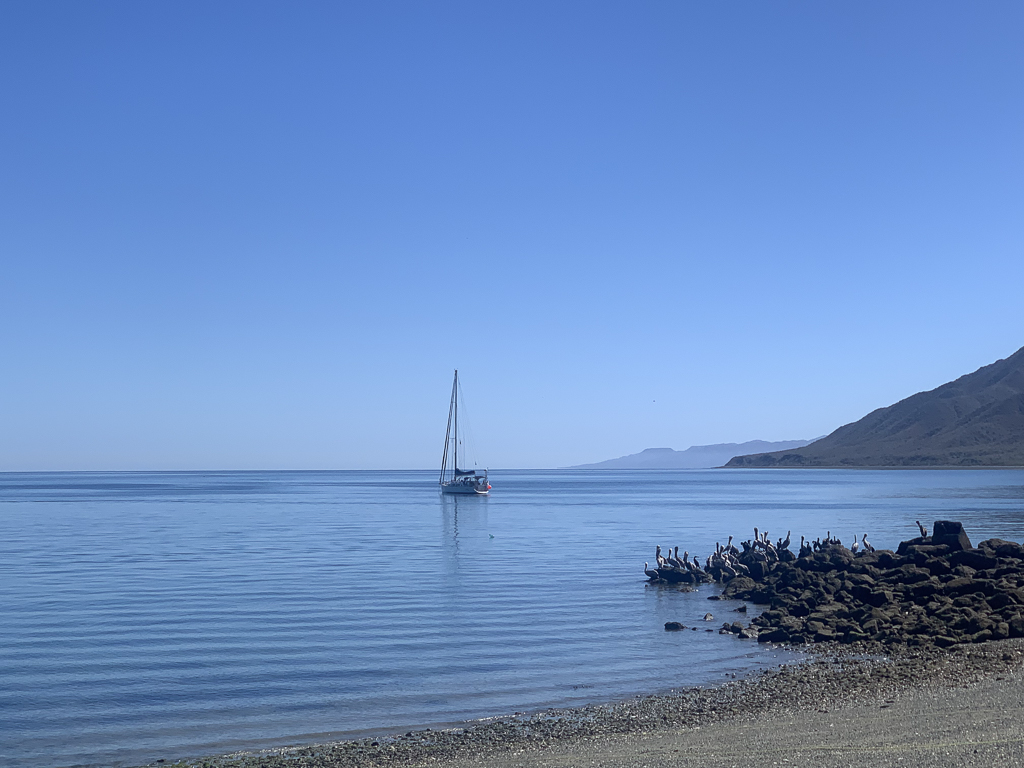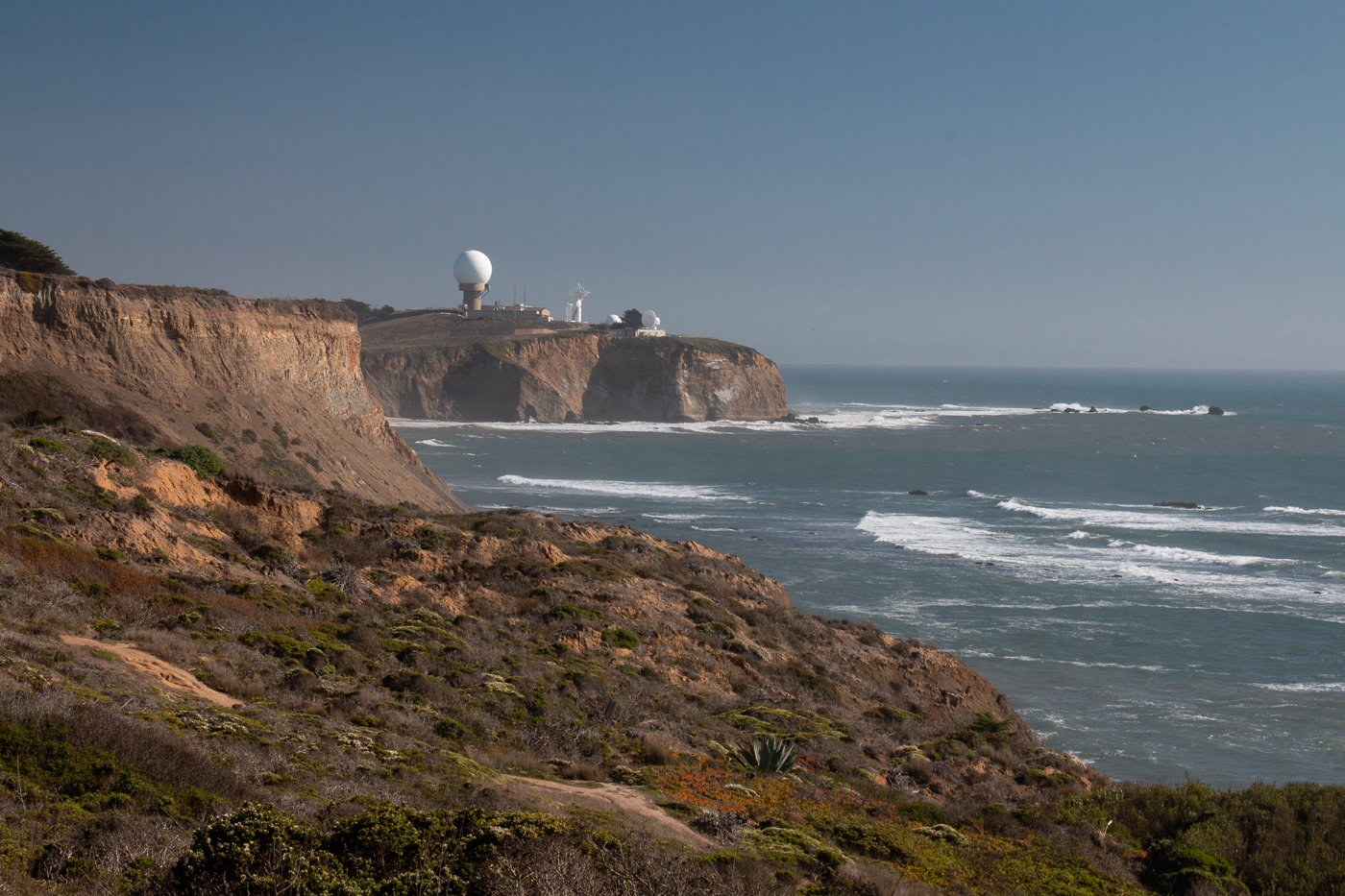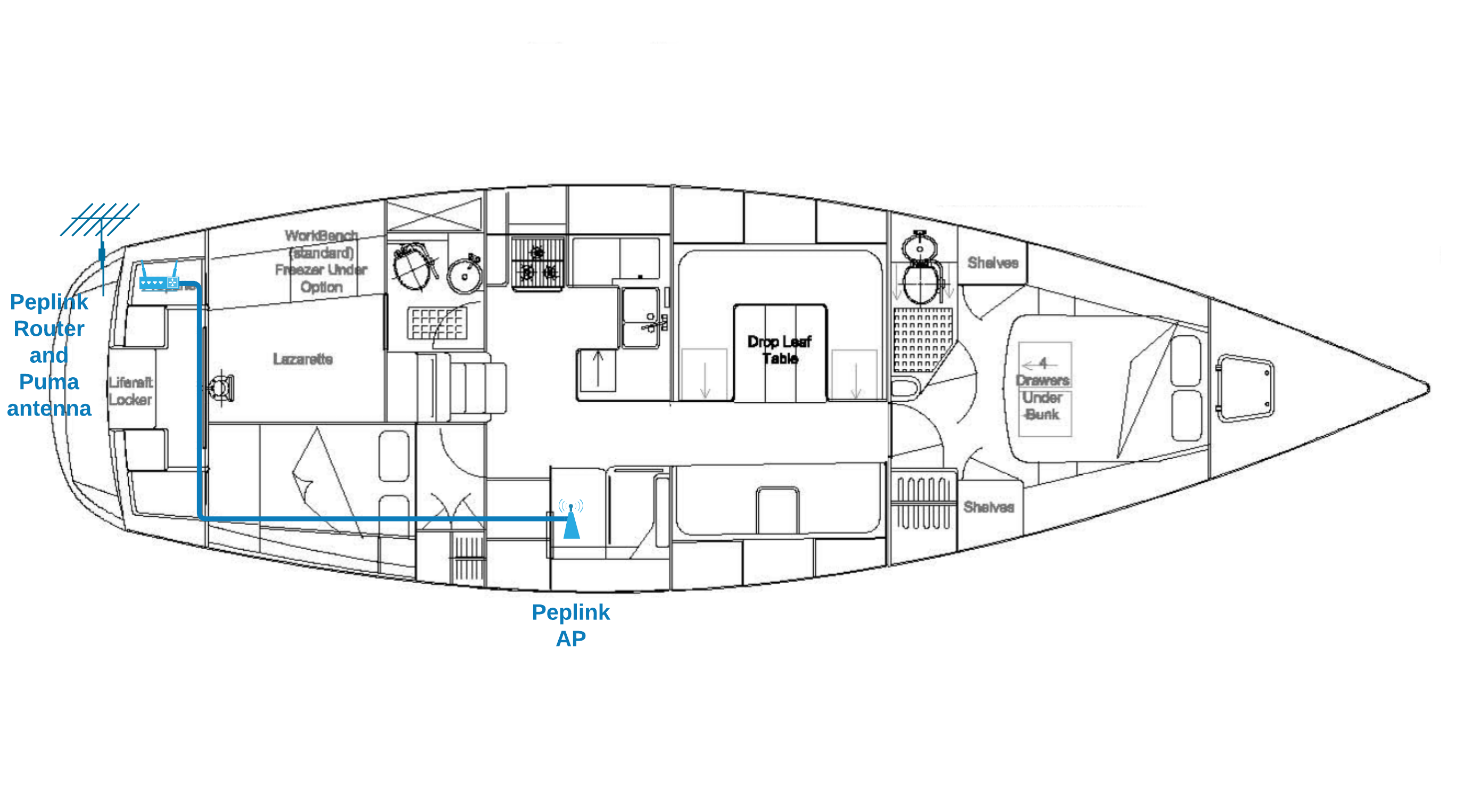
An uphill travel
The day finally came – all that was to be stowed away was stowed away, the systems tried and checked, all ready to go. Our hired captain (John) and the crew (Bones) flew in on Saturday 5/23 and together we wrapped up the last few things. The most important was the installation of the AIS system, to help us avoid other ships and be seen while underway, especially in busy shipping lanes around LA and San Francisco. A quick run to a local Kroger store to get food supplies (2 full carts) and we were ready. Departure was set for around noon on Sunday, May 24th. Right in the middle of a busy Memorial Day Weekend.
The start was a bit rough. We were departing at the tail end of a strong high-pressure system, that has been pushing wind and waves from the north. It was supposed to be calming down, giving us a window to hop around Point Conception and get closer to San Francisco. The first lesson was that the reality of the weather not always follows the precise to-the-hour predictions seen on PredictWind models. The sea state was still quite rough, with swell pushing from the north, and a changed south wind working against it. The result was somewhat reminiscent of a washing machine. I learned that I am indeed susceptible to seasickness, the first time in my sailing experience. After subjecting myself to 6 hours of this roller-coaster, I finally succumbed to Neptune’s will. But things got better after that, and on a second day and afterward, I felt great.
This was one of the many “firsts” on this trip. Many others followed. First seeing pods of dolphins and pods of humpbacks. First overnight watch and overnight sailing. First time leaving the port at night (that came later). Continuous learnings. It brought a lot of excitement of trying out new things and realizing that it is all doable, with the right preparation and precautions. One quick learning was that sailing offshore is actually much calmer than coastal cruising. You set the course, set the sails, and go for several hours. No need to constantly adjust things, unless the conditions are changing. This made standing night watches much easier than I expected. Also, on a clear night, it is quite bright, once your eyes get adjusted. Overall, standing a watch, especially at night, can be a calming experience.
There are many more differences between coastal sailing and going offshore, even if the “offshore” has been in the ~20 miles range. All those differences can be summed up in one word – SWELL. Swell is a constant that accompanies you on a passage. It can be smaller or bigger, but it is there even if the wind is minimal. There seems to be always some wind somewhere else that will make the waves going. Swell changes everything – the boat motion is different from when it’s in protected waters. You cannot move around the boat without looking for the next handhold to grab, and you finally appreciate all those reviews of offshore boat interiors as compared to open and airy coastal cruisers. You sleep in a cocoon of a lee cloth. Simple daily tasks, taking a shower, cooking, eating, become more difficult. You slow yourself down and plan each move and placement of each item more carefully. You adjust. After 3 days, it starts to become second nature. And then you stop because your weather window closed, and enjoy a full night’s sleep on a stable bed in the forward cabin. And then you start all over again.
I can actually imagine that going on a longer passage can be more enjoyable, once you get past the first few days.
After 3 days of sailing from Long Beach, CA, we stopped in Half Moon Bay, just 20 miles south of San Francisco Bay entrance. We had to duck in, as the calmer weather brought by the low-pressure system was going away. Another strong high was coming in and shutting down our ability to move north. Half Moon Bay is a fishing marina. It has a nice vibe and is very different from the experience of posh places around LA. We stayed there for 2 days and witnessed the whole fleet leaving out and coming back the same day, with a good catch. We were treated to 2 crabs and a chunk of halibut from the boat next to us. It was a feast.
In a few days another potential window started opening. This one was a very tentative one – one high-pressure system located offshore, with 30+ knot winds, being slowly pushed out by low pressure coming from the Bay area. The low pressure would actually build up to 25+ winds as well but from the south. For us to make use of it, we had to time everything right, and the forecast had to hold perfectly – leave Half Moon Bay at midnight, to start moving with the low system, but go past Bay entrance before it starts building up. Then continue with the low pressure as it pushes the strong north winds out just ahead of us. If anything changed in the forecast, we would need to quickly find some refuge in one of a few harbors present on the stretch of the coast north of SF. All that forecasting and route planning was provided to us by our mentors and routing experts – Behan and Jamie of SailingTotem. This was all to let us pass Cape Mendocino – one of the most notorious capes on this coast, famous for creating its own weather. We did that on the morning of May 30th, with me at the helm. I can only imagine what people rounding Cape Horn feel. This was my first cape to round and it felt great.

This trip was meant to be a shake-down cruise, and we did shake some things down. We discovered all sorts of small leaks into the boat, all likely coming from worn-out caulking around various windows and ports. We found and fixed problems with jib and genoa fuelers. The rattling of the engine cover. Leaks from a sun-vent. Clogged fuel filters, indicating tanks needing cleaning. All of that was expected and nothing became too big of a problem to not be dealt with while underway. Of course, the dealing with those came from John and Bones, who have done such deliveries many times and some even on other Outbounds, and knew the boat and knew what to do. It was another hands-on course for me.
We arrived on May 31st in Crescent City, CA. The last marina in California. We were greeted on the docks by a local fisherman describing this place as “the best marina on the West Coasts”. It sure looked very new, as it all has been rebuild fresh after being destroyed by a tsunami that originated from an earthquake by Japan several years ago. So we left the boat in this best marina on the West Coast for a week and drove home, to await the next big weather window. For that last leg, I had to stay back, due to work. John and Bones and another crew came back and finished the trip to WA state.
We have picked up the boat from them on June 12th in Port Townsend, WA. Two days later, with just the two of us, we first time sailed Qué vendrá completely by ourselves on the final leg to the homeport in Seattle – Elliott Bay Marina. The docking was challenging but we did not hit anything and were happy to finally have our boat in the right place.

Now onto more projects and more learning.














